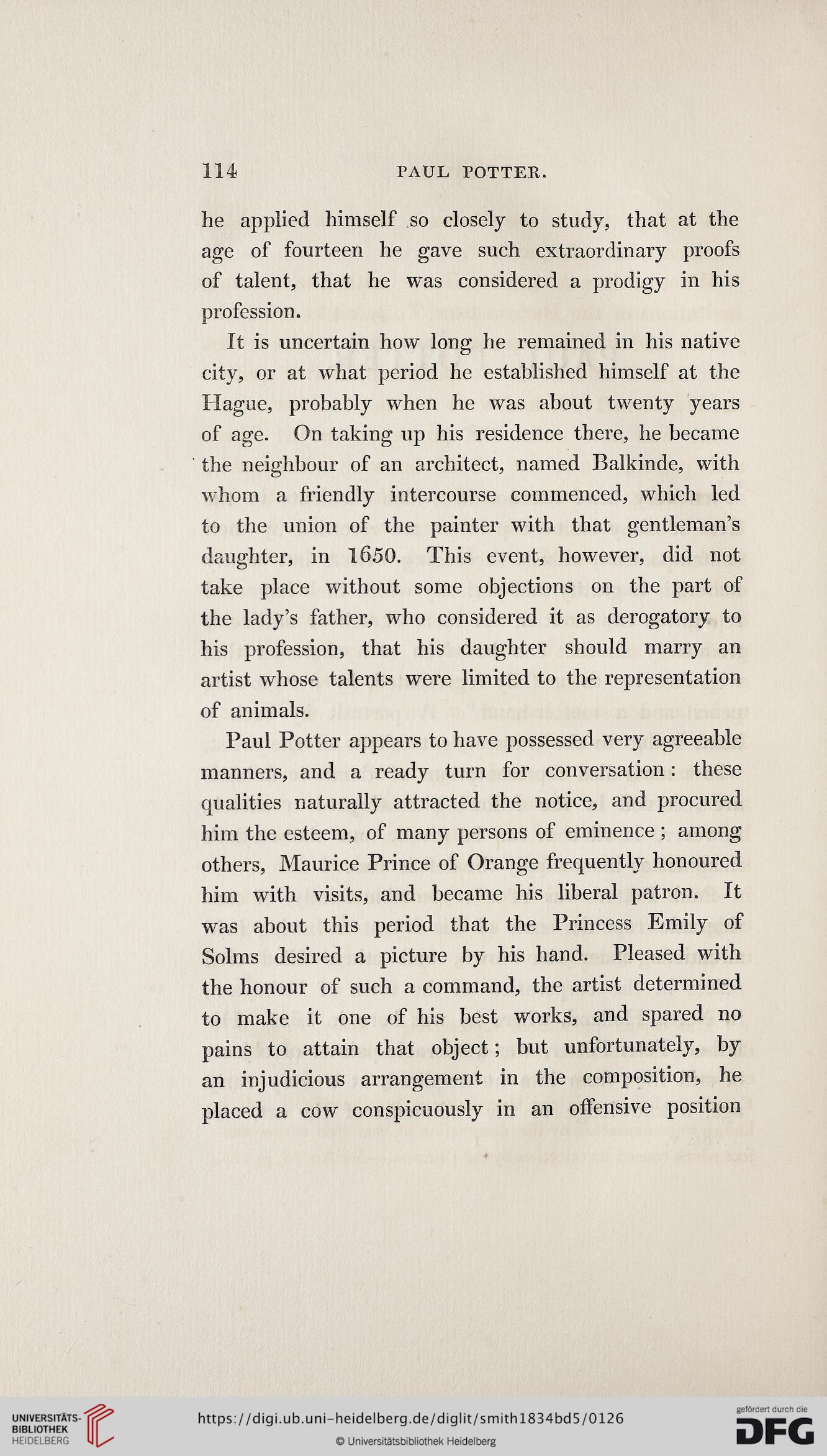114
PAUL POTTER.
he applied himself so closely to study, that at the
age of fourteen he gave such extraordinary proofs
of talent, that he was considered a prodigy in his
profession.
It is uncertain how long he remained in his native
city, or at what period he established himself at the
Hague, probably when he was about twenty years
of age. On taking up his residence there, he became
the neighbour of an architect, named Balkinde, with
whom a friendly intercourse commenced, which led
to the union of the painter with that gentleman’s
daughter, in 1650. This event, however, did not
take place without some objections on the part of
the lady’s father, who considered it as derogatory to
his profession, that his daughter should marry an
artist whose talents were limited to the representation
of animals.
Paul Potter appears to have possessed very agreeable
manners, and a ready turn for conversation: these
qualities naturally attracted the notice, and procured
him the esteem, of many persons of eminence ; among
others, Maurice Prince of Orange frequently honoured
him with visits, and became his liberal patron. It
was about this period that the Princess Emily of
Solms desired a picture by his hand. Pleased with
the honour of such a command, the artist determined
to make it one of his best works, and spared no
pains to attain that object; but unfortunately, by
an injudicious arrangement in the composition, he
placed a cow conspicuously in an offensive position
PAUL POTTER.
he applied himself so closely to study, that at the
age of fourteen he gave such extraordinary proofs
of talent, that he was considered a prodigy in his
profession.
It is uncertain how long he remained in his native
city, or at what period he established himself at the
Hague, probably when he was about twenty years
of age. On taking up his residence there, he became
the neighbour of an architect, named Balkinde, with
whom a friendly intercourse commenced, which led
to the union of the painter with that gentleman’s
daughter, in 1650. This event, however, did not
take place without some objections on the part of
the lady’s father, who considered it as derogatory to
his profession, that his daughter should marry an
artist whose talents were limited to the representation
of animals.
Paul Potter appears to have possessed very agreeable
manners, and a ready turn for conversation: these
qualities naturally attracted the notice, and procured
him the esteem, of many persons of eminence ; among
others, Maurice Prince of Orange frequently honoured
him with visits, and became his liberal patron. It
was about this period that the Princess Emily of
Solms desired a picture by his hand. Pleased with
the honour of such a command, the artist determined
to make it one of his best works, and spared no
pains to attain that object; but unfortunately, by
an injudicious arrangement in the composition, he
placed a cow conspicuously in an offensive position




